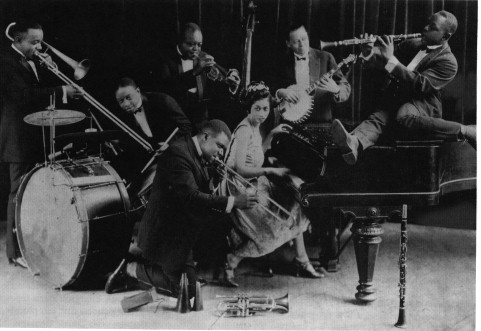Mardi Gras was the star of Treme this week, with all of the attendant cultural references. Probably the first thing to understand about Mardi Gras is that there are a number of parades spread across the weekend of Mardi Gras right up to fat Tuesday itself. Here’s the 2010 schedule from nola.com.
Personally, the one parade I always wanted to see that I never got to is Bacchus, the big parade on Sunday night. The Bacchagator is legendary. Endymion was mentioned and dismissed. It’s a huge parade that’s popular with tourists because it’s on Saturday night, the night of Mardi Gras that suits the schedule of out of town visitors the best.
The Krewes of Momus and Comus stopped parading rather than agree to ban racial discrimination.
For the full rundown of Mardi Gras info for this week, check out the New Orleans Times-Picayune’s Treme explained. A Blog Supreme once again comes through with the details on the music from this week’s episode. They also have an interview with Blake Leyh, the show’s music supervisor.
Treme Explained summarizes the episode (and Mardi Gras) well:
This episode expertly and seamlessly walks viewers to and from multiple Mardi Gras experiences, from the creatively costumed free-for-all in the Faubourg Marginy to the see-and-be-seen pre- and post-parade gatherings Uptown to Zulu’s Basin-to-Orleans jog toward the club’s Broad Street den to dozing in front of PBS affiliate WYES-Channel 12’s live coverage of the Rex Ball. It happens pretty much just like this every year on a weekday during which the rest of the world is at work checking e mails and sitting in meetings.
As mentioned in the NPR interview, there was nothing unusual about the police shutting down the city at midnight on Mardi Gras. When the clock rolls over to Ash Wednesday, Mardi Gras is over and everything closes. As far as I know, it’s been that way forever.

Wrapping up Treme
Season one of Treme is finished, and I totally failed to produce the last two installments of the Treme essential reference. I think it’s because as the season drew to a close, the fictional plot points overwhelmed the factual depiction of New Orleans and its customs that so captivated me throughout the run of the series.
To fill in the gaps, I would recommend (as I did every week), Treme explained from the New Orleans Times-Picayune, and of course the ongoing series of interviews about Treme at A Blog Supreme.
Fans of the show will not want to miss David Simon’s interview with Alan Sepinwall, which includes a lot of exposition on what Simon intended with the show. Here’s what he had to say in response to complaints about the show being “too preachy”:
Treme is, more than any other television series I can think of, a show made to be appreciated in this era. Here’s one of the questions Sepinwall asks Simon:
Simon’s answer is interesting, but here’s my answer from a fan’s perspective. These days we have Google and Wikipedia to help us fill in the blanks. There are bloggers of all stripes writing about Treme. And of course the New Orleans Times-Picayune and NPR have been doing their part to fill fans in with all of the background information they can stand. So there’s no need for David Simon to fill in the blanks with boring explanations — fans who are interested have the Internet for that. It’s a show for the modern fan who’s willing to put in the effort to get the most they can out of television as a piece of literature. I appreciate they fact that they didn’t waste my time with stuff I could figure out on my own.